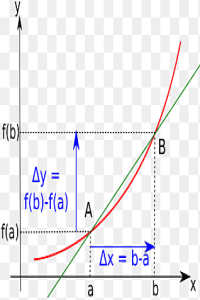Araştırma Makalesi
Amaç ve Kapsam
JAMAME is an international academic journal which will be published quarterly. JAMAME is a peer-reviewed, Open Access journal that publishes original research articles as well as review articles on all aspects of both püre, applied mathematics and mathematics education. The three referees check the post. It is published with at least two acceptance approvals.
Journal of Advanced Mathematics and Mathematics Education (jamame) is an international publication organized by Seyfullah Hızarcı. It publishes research articles in all areas of mathematics. These will be selected by a distinguished, international board of editors based on outstanding quality and interest, and according to the highest international standards.
The purpose of Journal is contributing to mathematics and Mathematics Education . Editors evaluate submitted papers strictly on the basis of scientific merit. All articles submitted to this journal are peer-reviewed. The JAMAME uses a single-blind peer-review process, which means that the reviewers know who the authors of the manuscript are, but the authors do not know who the peer reviewers.
Yazım Kuralları
Papers which are sent to first volume should be written in word form, titles should be 12 puntos and text should be 10 puntos.
A paper may be submitted to info@jamame.net or seyfullahhizarci@gmail.com in our style only. However, a manuscript can be submitted to any member of the Editorial Board. A zip file containing a template and style files for LaTeX and PDF can be downloaded here.
Etik İlkeler ve Yayın Politikası
Ethical Guidelines for Peer Reviewers
1) The manuscript must be related to your area of expertise. Only accept if you can provide a high quality review.
2) If you have a potential conflict of interest, you must inform the editor when you respond.
3) Make sure you can allocate enough time since reviewing process can be a lot of work.
4) Before you commit, make sure you will be able to meet the deadline.
5) Invitations must be replied as soon as possible. Late invitation responses decelerate the review process.
6) If you decline the invitation, suggest for alternative reviewers.
When You Agree to Review
1) The material you receive is confidential, which means that it is not to be shared with other parties without getting authorization from the editor.
2) Any information regarding your review also cannot be shared with anyone without informing the editor and the author(s) as peer review is confidential.
Before you start
1) Read the article to get an overall idea
2) Consider the article from your perspective
3) What the journal is looking for must be regarded when you start writing your review
4) Have a copy of a reviewing criteria that you need to use
Your review report
1) Your review article is highly important as it helps the editor decide whether or not to publish the article
2) It is necessary to give your opinions and observations on the article.
3) Highlighting any deficiencies is a must
4) Explain and support your judgment
5) Editor(s) and author(s) should be able to understand the reasoning behind your comments
6) Indicate whether your comments are your opinions or reflected by data
7) Providing constructive feedback and commenting in a courteous manner is essential
8) Do not include any personal remarks and/or personal details
9) Do not add your name in your comments
Checklist
1) Write a brief summary showing the editor(s) that you have read and fully understand the material
2) Give your overall opinion of the research and include whether:
· It is novel and/or interesting
· It has an impact
· Contributes to the knowledge base
3) In your commentary include your opinions on layout and format, title, abstract, introduction, graphical abstracts and/or highlights, method, statistical errors, results, conclusion/discussion, language and references.
4) Mention any journal specific points. If it happens to adhere to the journal’s standards, write it in your review
5) If there is an issue of plagiarism, fraud or have other ethical concerns, share your suspicions with the editor in detail.
Your recommendation
Considering the categories the editor most likely uses for classifying the article:
Accept without revision
Accept with minor/major revision (explain the revision required, and indicate to the editor whether or not you would be happy to review the revised article)
Reject (explain reason in report in detail)
The final decision
It is editor’s decision whether to accept or reject the article. The editor takes all views and may call for a third opinion or ask the author for a revised paper .The online editorial system provides reviewers with a notification of the final decision, if the journal has opted in to this function. If this is not the case, you can contact the editor to find out if the article was accepted or rejected.
Plagiarism prevention with iThenticate
iThenticate compares every submitted paper to a massive database of content from over 80,000 major newspapers, magazines, scholarly journals, and books as well as a database of over 10 billion current and archived pages of web content. In addition, iThenticate checks materials from over 40,000 scholarly journals and more than 150 STM publishers.
The similarity rate of the articles uploaded to our journal is determined by the iThenticate program.
The editorial board of JAMAME journal complies with the following rules for plagiarism policy;
- The authors are asked to reduce the similarity of their articles below 20%, and three rights are granted for a week for similarity to be <20%.
- Only articles with a similarity rate ≤ 20% are taken into the review process.
- The above mentioned rules are accepted by all authors who have uploaded articles to the jJAMAME journal
Ücret Politikası
The magazine is currently paid.
Dizinler
Diğer Dizinler
Dergi Kurulları
Otomatik Oluşturulan Kurul - Başlığı Düzenleyiniz


Özen ÖZER received her BSc and MSc degree in Mathematics from Trakya University, Edirne (Turkey) and also PhD degree in Mathematics from Süleyman Demirel University, Isparta (Turkey), respectively. Currently, she works as an Associate Professor Doctor at the Department of Mathematics in the Faculty of Science and Arts at the Kırklareli University.
Her research of specialization includes the Theory of Real Quadratic Number Fields with applications, Diophantine and Pell Equations, Diophantine Sets, Arithmetic Functions, Fixed Point Theory, p_adic Analysis, q_Analysis, Special Integer Sequences, Nonlinear Analysis, C* Algebra, Matrix Theory, Optimization, Approximation Theory, Cryptography, Machine Learning, Artificial Intelligent, Differential Equations, Statistics and so on…
She has published/completed more than 70 research papers in high quality international journals as well as many national and international scientific projects. She also has written/published some books and chapters of books on Number Theory , Algebra, Applied Mathematics and Analysis in the international publishing houses. She has attended various national and international conferences in lots of countries with different kinds of topics as keynote speaker. She has worked in the different international journals ( more than 60 different publishing houses and journals) as reviewer as well as member of the editorial boards of the books, papers and conference procedings. She is ready and open for all kind of academic/ scientific colloboaration and cooperative too.
E-mail: ozenozer39@gmail.com, ooozenozer@gmail.com , ozenozer39@yahoo.com
E-Blog: https://ozenozer.blogspot.com/2019/07/
Google Scholar: https://scholar.google.com.tr/citations?user=y1Kzm2AAAAAJ&hl=tr
Researchgate: https://www.researchgate.net/profile/Oezen_Oezer

Otomatik Oluşturulan Kurul - Başlığı Düzenleyiniz



Özen ÖZER received her BSc and MSc degree in Mathematics from Trakya University, Edirne (Turkey) and also PhD degree in Mathematics from Süleyman Demirel University, Isparta (Turkey), respectively. Currently, she works as an Associate Professor Doctor at the Department of Mathematics in the Faculty of Science and Arts at the Kırklareli University.
Her research of specialization includes the Theory of Real Quadratic Number Fields with applications, Diophantine and Pell Equations, Diophantine Sets, Arithmetic Functions, Fixed Point Theory, p_adic Analysis, q_Analysis, Special Integer Sequences, Nonlinear Analysis, C* Algebra, Matrix Theory, Optimization, Approximation Theory, Cryptography, Machine Learning, Artificial Intelligent, Differential Equations, Statistics and so on…
She has published/completed more than 70 research papers in high quality international journals as well as many national and international scientific projects. She also has written/published some books and chapters of books on Number Theory , Algebra, Applied Mathematics and Analysis in the international publishing houses. She has attended various national and international conferences in lots of countries with different kinds of topics as keynote speaker. She has worked in the different international journals ( more than 60 different publishing houses and journals) as reviewer as well as member of the editorial boards of the books, papers and conference procedings. She is ready and open for all kind of academic/ scientific colloboaration and cooperative too.
E-mail: ozenozer39@gmail.com, ooozenozer@gmail.com , ozenozer39@yahoo.com
E-Blog: https://ozenozer.blogspot.com/2019/07/
Google Scholar: https://scholar.google.com.tr/citations?user=y1Kzm2AAAAAJ&hl=tr
Researchgate: https://www.researchgate.net/profile/Oezen_Oezer
Otomatik Oluşturulan Kurul - Başlığı Düzenleyiniz



Özen ÖZER received her BSc and MSc degree in Mathematics from Trakya University, Edirne (Turkey) and also PhD degree in Mathematics from Süleyman Demirel University, Isparta (Turkey), respectively. Currently, she works as an Associate Professor Doctor at the Department of Mathematics in the Faculty of Science and Arts at the Kırklareli University.
Her research of specialization includes the Theory of Real Quadratic Number Fields with applications, Diophantine and Pell Equations, Diophantine Sets, Arithmetic Functions, Fixed Point Theory, p_adic Analysis, q_Analysis, Special Integer Sequences, Nonlinear Analysis, C* Algebra, Matrix Theory, Optimization, Approximation Theory, Cryptography, Machine Learning, Artificial Intelligent, Differential Equations, Statistics and so on…
She has published/completed more than 70 research papers in high quality international journals as well as many national and international scientific projects. She also has written/published some books and chapters of books on Number Theory , Algebra, Applied Mathematics and Analysis in the international publishing houses. She has attended various national and international conferences in lots of countries with different kinds of topics as keynote speaker. She has worked in the different international journals ( more than 60 different publishing houses and journals) as reviewer as well as member of the editorial boards of the books, papers and conference procedings. She is ready and open for all kind of academic/ scientific colloboaration and cooperative too.
E-mail: ozenozer39@gmail.com, ooozenozer@gmail.com , ozenozer39@yahoo.com
E-Blog: https://ozenozer.blogspot.com/2019/07/
Google Scholar: https://scholar.google.com.tr/citations?user=y1Kzm2AAAAAJ&hl=tr
Researchgate: https://www.researchgate.net/profile/Oezen_Oezer
dil editörü
Atike Elanur Hızarcı

Editor Board














